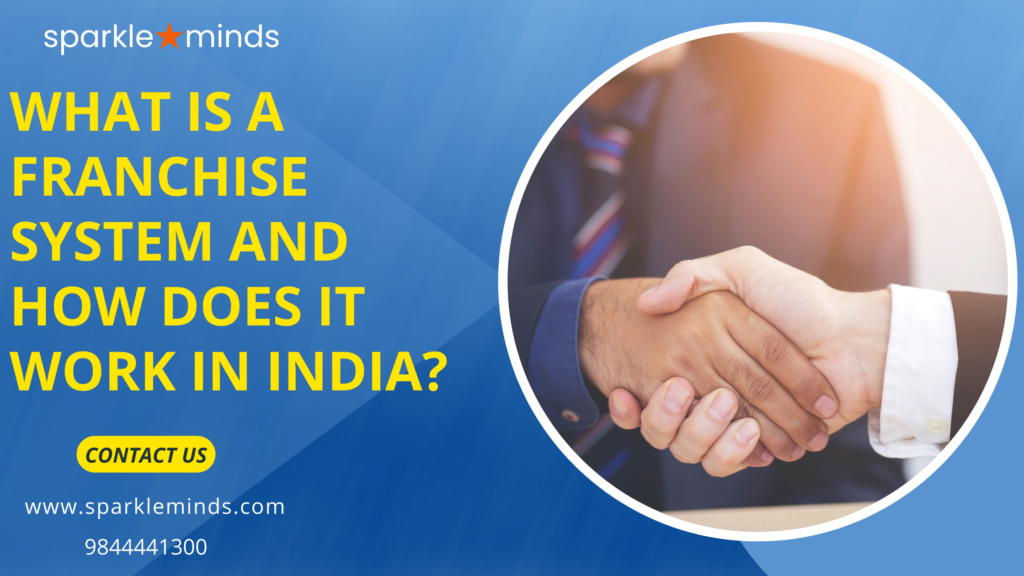McDonald’s is a brand and franchise that’s reached worldwide popularity. Today, the brand is synonymous with burgers, fries, and shakes. Coupled with its iconic logo, anyone can recognize the brand no matter where they are.
Let’s talk about the MC Donald’s franchise success of the brand
In this blog, we’ll discuss the brand’s history, the founder of the brand, some of the business models McDonald’s has used for its franchisees, and its marketing strategies.

A Brief Introduction to the Brand and Franchise
The McDonald’s corporation is a North American fast-food organization. Its best known for its burgers, cheeseburgers, and fries, but the menu also includes other popular items like its Happy Meal, that’s a hit with its younger customers, the Big Mac, the McFlurry, or even its separate breakfast menu.
And in light of changing preferences, McDonald’s has recently introduced fruit and vegetable choices in its meal packages. By bringing in healthier options the brand hopes to inspire healthy-eating choices in its younger customers.
A History of McDonald’s
McDonald’s was first established in 1940 by brothers Richard and Maurice McDonald in California, United States. Originally a drive-in, the brothers decided to revamp the business in 1948. The new model was designed to produce huge amounts of food at low prices. To achieve this, the brothers limited the menu, only offering a select few items, and developed a high-Speed Service System.
This system allowed them to introduce a self-service counter and eliminate the need for staff. The burgers were made ahead of time and placed under heating lamps which allowed them to charge 15 cents a burger – almost half the price of competing restaurants at the time.
Ray Kroc
Ray Kroc, the former CEO of McDonald’s was originally a salesman who supplied appliances for the restaurant. In 1954, he visited the shop to see how one small store can sell so many milkshakes and realized the potential the brand held.
Kroc became a franchising agent for the brand and launched McDonald’s System Inc., which later came to be known as McDonald’s Corporations. In 1955, he opened the first franchise east of the Mississippi River in Des Plaines, Illinois. And in 1961, he bought out the McDonald’s brothers for $2.7 million.
The Brand’s Mission and Ethos
McDonald’s mission of “Quality, Service, Cleanliness, and Value”, is what has kept the brand in the business. The McDonald’s franchises focus heavily on five fundamentals – people, products, place, price, and promotion. Along with their business strategy “Plan to Win”.
And the McDonald’s business model depends heavily on three core principles – retaining, regaining, and converting. It focuses on retaining old customers, regaining lost trust, and converting casual customers into regular/loyal ones. Additionally, it’s embraced digital advancements and food delivery. The company has always been open to reshaping its customer experience through innovation and human endeavors.
The McDonald’s Franchise System
Kroc soon realized that franchisees were integral to the success of the brand and launched a franchise system. As he once stated, “McDonald’s can’t be successful unless our franchisees are successful.”
He prepared exact standards of how each McDonald’s was supposed to be run from cleaning to food preparation. And to ensure consistency, he created Hamburger University in 1961, to train franchisees.
He eventually changed the format of the restaurants by adding counter staff to take customer orders and also added a drive-through. An addition that’s become prevalent in almost all fast-food franchises today.
What Does Owning a McDonald’s Franchise Look Like?
McDonald’s opened its first international outlet in 1967 in Richmond, British Columbia, Canada. And by the early 21st century the brand had over 34,000 outlets across 115 countries worldwide. Growth was so quick that it became the most popular family restaurant, with its affordable food, separate menu options catered towards children, and flavors that appealed to nearly everyone.
With over 60 years in the business, as a franchise, McDonald’s has a proven framework for success. It’s a classic example of a heavily franchised brand. As of 2021, over 56% of its revenue came from franchised restaurants. While the company owns and operates (COCO model) a small percentage of its restaurants, McDonald’s plans to reduce that number to 5%, with a long-term goal to transition towards 95% of its outlets being franchised (FOFO model) restaurants.
In 2021 the company generated over $23 billion in revenues, of which $9.78 billion was from company-owned restaurants and $13 billion from franchised restaurants. And the success of their overseas franchise models has resulted in the term, “McDonaldization”
Developing McDonald’s Marketing Plan
In less than ten years, after Kroc became the sole owner of the franchise, the number of outlets exceeded 1,000. Through its success, the company began trading publicly in 1965.
The first ever McDonald’s mascot was a burger wearing a cooking cap who was alluded to as Speedee. In 1962 the golden arches were introduced and have continued to be the face of the brand, even today. The logo was inspired by the tall yellow arches that dominated earlier McDonald’s rooftops.
And lastly, in 1965, their newest mascot, Ronald McDonald was introduced. However, the growing negative perception of clowns in the 21st century resulted in them sidelining the character.
The most notable addition to the brand was the introduction of the Big Mac to the menu. The iconic hamburger was an instant hit and the company’s top-selling product, after its French fries. These changes helped the brand grow and gain popularity among the masses.
Criticisms Leveled at the Brand
The success of McDonald’s also brought its fair share of criticism of the brand. A lot of this was concerned with the brand’s association with the global increase in obesity. In the early 2000s, various lawsuits and complaints were filed and registered against the company in the United States, alleging that its food caused health problems. The company also received a lot of negative press from the documentary Super-Size Me (2004), in which the filmmaker documented a decline in his health while on a diet of only McDonald’s foods.
In response, the brand started developing vegan options for its menus, like McVegan, P.L.T., and McPlant. And in 2017 the company released its first plant-based burger. In 2018, the company announced that it had stopped using preservatives in most of its burgers and eliminated its super-sized menu options. And its US and Canadian branches stopped using Trans fats in a number of its food items. However, this did little to curb the health concerns regarding the brand.
Additionally, the company also faced a spike in the number of calls to increase employee wages. The term “McJob” was added to Merriam-Webster to mean a low-paying job. Recently, the company has come under fire, similar to other large corporations for its negative impact on the environment, especially concerning greenhouse gas emissions.
In answer to this, the company increased employee wages and launched initiatives to cut down on its carbon footprint. Like launching programs to move towards using recyclable bags, utensils, and other items. And making moves to be increasingly transparent in their production processes.
The Future of McDonald’s
As of 2022, McDonald’s is still a leading franchised brand in the fast food industry. Frankly, there’s little doubt about the company’s ability to attract customers. Even during a bad year, McDonald’s still makes a profit.
As for the future expansion of the brand, McDonald’s has already been taking steps to improve upon its already successful business model. This can be evidenced by the introduction of automated ordering stations in their outlets, digital or contactless payment options, and more plant-based food items in their menu to cater to a more diverse customer base.
They also plan on remodeling their restaurants to cut down on carbon emissions by either replacing their equipment or altering their practices. McDonald’s plans to fully achieve company-wide, net zero emissions by 2030.
In Conclusion
McDonald’s is a great business model for startups or experienced entrepreneurs to read up on if you’re currently looking up references to start your franchise. It’s got a proven working model and over 60 years’ worth of experience in the industry to back it up. All of which can be evidenced by the franchise’s worldwide success.
So what are you waiting for? Take action now! Your business can be the next global franchise successful brand. Start franchising today with sparkle★minds. Connect with us now!
![]()


